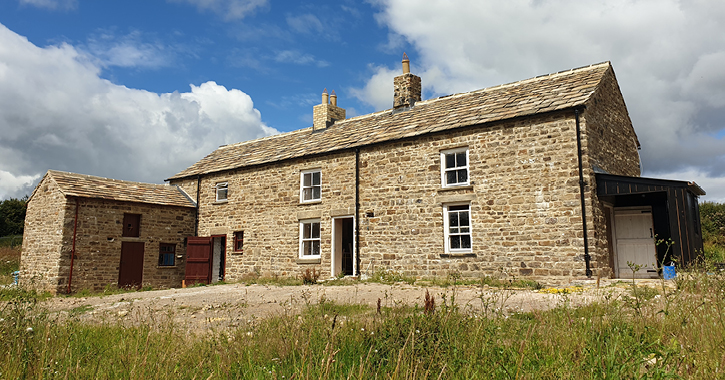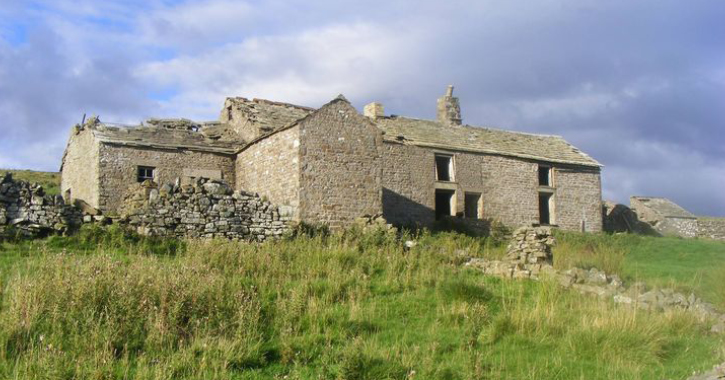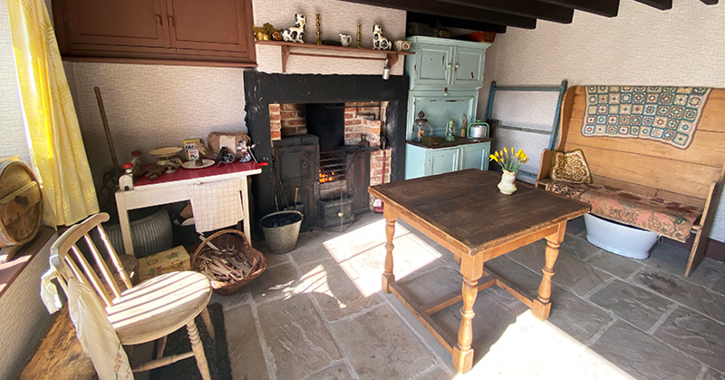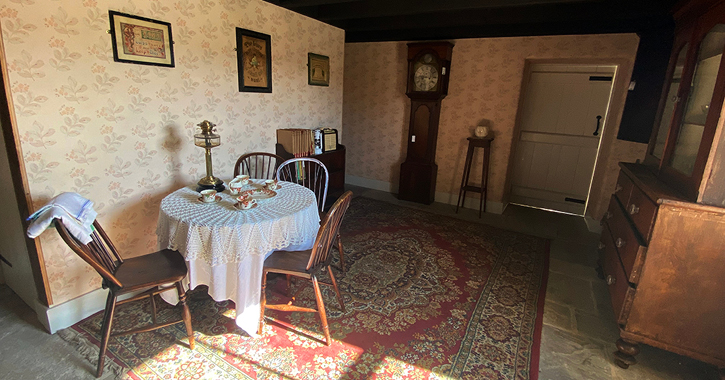A farm that has been moved stone by stone and rebuilt at Beamish, The Living Museum of the North will open its doors to visitors this weekend (Saturday 19 March 2022).
Spain’s Field Farm originally stood for centuries in Eastgate, in the Durham Dales, before being dismantled and transported to the museum, where it had been carefully rebuilt by Beamish’s team to show life in the 1950s on the region’s upland farms.

The farm will be officially opened on Saturday 19 March at 1pm by Yvonne Forster, whose late mother Mary Forster (nee Raine) is among generations of the Raine family who lived at Spain’s Field Farm.
Around 1,170 tonnes of Spain’s Field Farm’s stone and timber were moved to the museum after the farm was kindly donated to the museum by the Jopling family. The building was thoroughly recorded before being dismantled and among the objects discovered were a Georgian bread oven, 17th century cannonball, fragments of 1950s Farmer’s Weekly magazines, furniture and farm tools. Samples from the remnants of internal paint, lino and wallpaper were also taken.

Beamish’s team carefully rebuilt the farm and also worked with the Raine family and the Weardale community to gather stories and memories. Generations of the Raine family lived at Spain’s Field from the 1870s until they moved out of the farm in the late 1950s although they continued to use the buildings into the 1970s.
The farm at Beamish features furniture and other items from Spain’s Field that were donated by the family. Mary Forster (nee Raine) lived there from the 1920s until she was married in the 1940s. Mary, who passed away in 2020 aged 101, laid the first stone of Spain’s Field at Beamish and her memories helped to shape the stories the museum will tell at the farm.

Her daughter Yvonne has memories of staying at Spain’s Field as a child in the 1950s. She said: “It’s a privilege to have the house rebuilt, it’s a wonderful thought that Spain’s Field is going to live on. My mum was absolutely thrilled. I realise how unique it is to have this happen, it’s very special".
Visitors to Spain’s Field Farm at Beamish will be able to see what life was like for families living in upland farms during the 1950s. Spain’s Field had no electricity, and water was sourced from a nearby spring. The family was almost self-sufficient, growing their own food and making butter, bread, cheese and jams. Visitors will be able to see traditional rural skills and discover the farm kitchen produce.

The 1950s was a period of change for agriculture, with new legislation and regulations affecting farming. Many upland farms during this time were being abandoned following this, as well as for other reasons, and have since become ruins.
The earliest recording of the farm was in 1382, with the earliest stonework on the existing building thought to date from the 1700s. The main house was built in the late 18th century and extended during the second half of the 19th century.
Spain’s Field Farm is part of the Remaking Beamish project, which also includes a 1950s Town, bus depot and transport, and expansion of the 1820s Landscape, including Georgian industry and overnight accommodation.
Spain’s Field Farm will be open on weekends from 19th March. Visitors to Beamish Museum will need to book a timeslot ticket before visiting.
Related
Comments
Comments are disabled for this post.



 to add an item to your Itinerary basket.
to add an item to your Itinerary basket.
.png)





